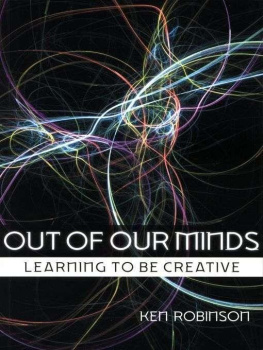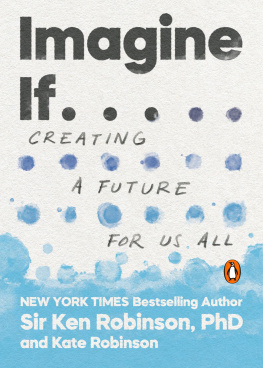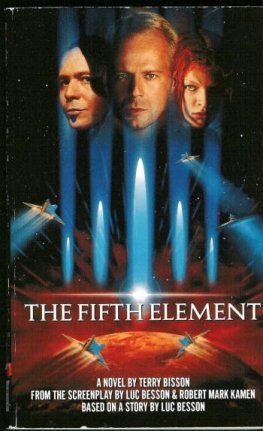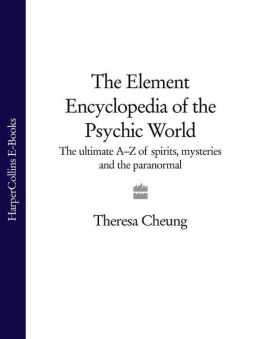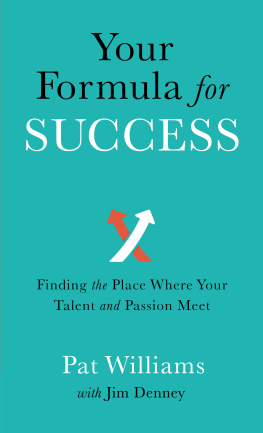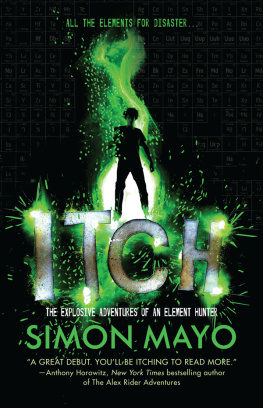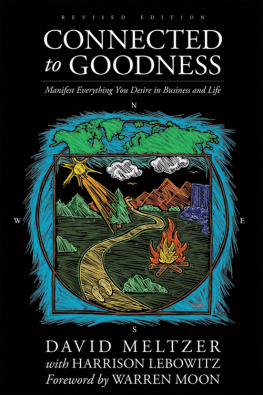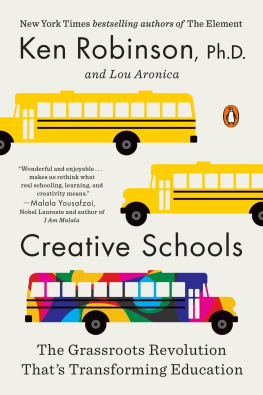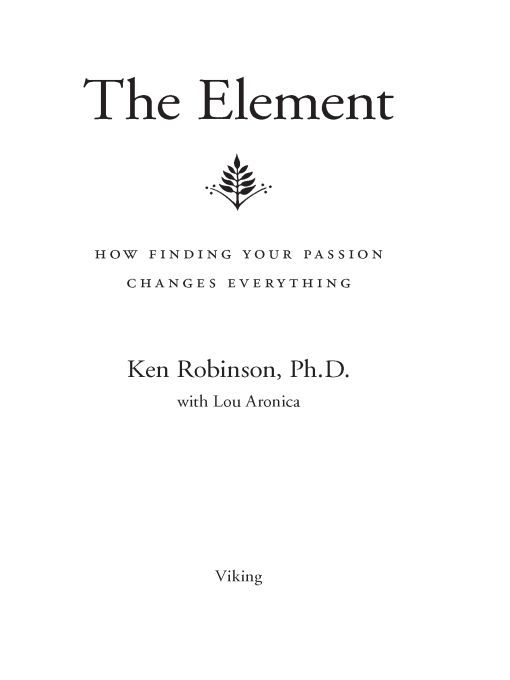Table of Contents
To my sister and brothers, Ethel Lena, Keith, Derek, Ian, John, and Neil; to our extraordinary Mum and Dad, Ethel and Jim; to my son, James, and my daughter, Kate, and to my soul mate, Terry. This book is for you. For all your many talents and for the endless love and laughter we put into each others lives. Its when Im with you and the ones you love that I really am in my Element.
Acknowledgments
They say it takes a village to raise a baby. Rearing a book like this takes a small metropolis. I know I have to say I cant thank everyone, and I really cant. I do have to single out a few people, though, for special service awards.
First and foremost, my wife and partner, Terry. This book simply wouldnt be in your hands but for her. Its origins were in an off-the-cuff remark I made at a conference a few years ago. I had just told the Gillian Lynne story, which now opens chapter 1 of the book. In passing, I said that one of these days I was going to write a book about stories like that. Ive since learned not to say these things out loud in front of Terry. She asked me when did I have in mind. Soon, I said, definitely soon. After a few months had passed, she started it herself, wrote the proposal, worked on the ideas, did some of the initial interviews, and then found the agent, Peter Miller, who was to help make it happen. With the foundations laid so solidly, and the escape routes closed so firmly, I finally kept my word and got on with the book.
I want to thank Peter Miller, our literary agent, for all his great work, not least in bringing Lou Aronica and me together. I travel a lottoo much, reallyand producing a book like this needs time, energy, and collaboration. Lou was the ideal partner. He is seriously professional: sage, judicious, creative, and patient. He was the calm center of the project as I orbited the earth, sending notes, drafts, and second thoughts from airports and hotel rooms. Between us, we also managed to steer a successful course between the often comic conflicts of British and American English. Thank you, Lou.
My son, James, gave up his precious, final student summer to pore over archives, journals, and Internet sites, checking facts, dates, and ideas. Then he debated virtually every idea in the book with me until I was worn out. Nancy Allen worked for several months on research issues under increasingly tight deadlines. My daughter, Kate, had a wonderfully creative collaboration with Nick Egan to produce a unique Web site that shows all the other work were now doing. Our assistant, Andrea Hanna, worked tirelessly to orchestrate the myriad moving parts in a project like this. We wouldnt still be standing up without her.
As the book was taking shape, we were extremely fortunate to have the wise and creative counsel of our publisher, Kathryn Court, at Viking Penguin. Her benign form of intimidation also ensured that we got the book finished in decent time.
Finally, I have to thank all of those whose stories illuminate this book. Many of them spent precious hours, amid very busy lives, to talk freely and passionately about the experiences and ideas that lie at the heart of The Element. Many others sent me moving letters and e-mails. Their stories show that the issues in this book reach into the core of our lives. I thank all of them.
Its usual to say, of course, that whatever good things other people have contributed, any faults that remain in the book are my responsibility alone. That seems a bit harsh to me, but I suppose its true.
Introduction
A FEW YEARS AGO, I heard a wonderful story, which Im very fond of telling. An elementary school teacher was giving a drawing class to a group of six-year-old children. At the back of the classroom sat a little girl who normally didnt pay much attention in school. In the drawing class she did. For more than twenty minutes, the girl sat with her arms curled around her paper, totally absorbed in what she was doing. The teacher found this fascinating. Eventually, she asked the girl what she was drawing. Without looking up, the girl said, Im drawing a picture of God. Surprised, the teacher said, But nobody knows what God looks like.
The girl said, They will in a minute.
I love this story because it reminds us that young children are wonderfully confident in their own imaginations. Most of us lose this confidence as we grow up. Ask a class of first graders which of them thinks theyre creative and theyll all put their hands up. Ask a group of college seniors this same question and most of them wont. I believe passionately that we are all born with tremendous natural capacities, and that we lose touch with many of them as we spend more time in the world. Ironically, one of the main reasons this happens is education. The result is that too many people never connect with their true talents and therefore dont know what theyre really capable of achieving.
In that sense, they dont know who they really are.
I travel a great deal and work with people all around the world. I work with education systems, with corporations, and with not-for-profit organizations. Everywhere, I meet students who are trying to figure out their futures and dont know where to start. I meet concerned parents who are trying to help them but instead often steer them away from their true talents on the assumption that their kids have to follow conventional routes to success. I meet employers who are struggling to understand and make better use of the diverse talents of the people in their companies. Along the way, Ive lost track of the numbers of people Ive met who have no real sense of what their individual talents and passions are. They dont enjoy what they are doing now but they have no idea what actually would fulfill them.
On the other hand, I also meet people whove been highly successful in all kinds of fields who are passionate about what they do and couldnt imagine doing anything else. I believe that their stories have something important to teach all of us about the nature of human capacity and fulfillment. As Ive spoken at events around the world, Ive found its real stories like these, at least as much as statistics and the opinions of experts, that persuade people that we all need to think differently about ourselves and about what were doing with our lives; about how were educating our children and how were running our organizations.
This book contains a wide range of stories about the creative journeys of very different people. Many of them were interviewed specifically for this book. These people tell how they first came to recognize their unique talents and how they make a highly successful living from doing what they love. What strikes me is that often their journeys havent been conventional. Theyve been full of twists, turns, and surprises. Often those I interviewed said that our conversations for the book revealed ideas and experiences they hadnt discussed in this way before. The moment of recognition. The evolution of their talents. The encouragement or discouragement of family, friends, and teachers. What made them forge ahead in the face of numerous obstacles.
Their stories are not fairy tales, though. All of these people are leading complicated and challenging lives. Their personal journeys have not been easy and straightforward. Theyve all had their disasters as well as their triumphs. None of them have perfect lives. But all of them regularly experience moments that feel like perfection. Their stories are often fascinating.


